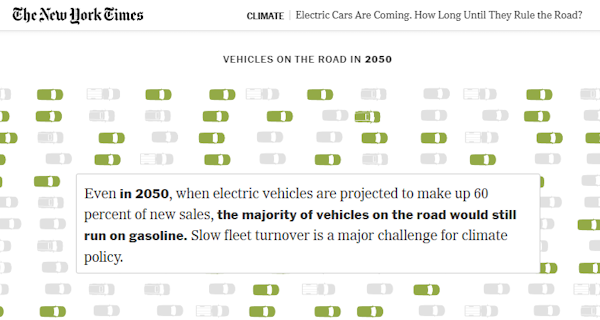This is my bi-weekly “newsletter” delivered straight to your inbox, as requested at some point in the past. Hopefully you’re enjoying it? If not, there’s a link down below to unsubscribe. No hard feelings! If you are, though, drop a comment on the blog, on the socials, or send me an email. (Unfortunately, replies to the newsletter email itself won’t be received.)
_ONE
Not Lost in a Book | Dan Kois
It’s great that the kids who love these books—or Spider-Man comics, or manga, or for that matter off-putting kid-lit “histories” about tragedies that happened in my lifetime—are reading something. For sure! Yet I can’t help but be worried that the kinds of books that changed my life between ages 8 and 12 are falling by the wayside. Is there room for the thoughtful, serious, beautiful young-person’s novel in 2024? Can you publish Bridge to Terabithia in the age of Captain Underpants?
Whenever there’s an article about a decline in reading, you usually have to get towards the end to discover the author’s motivating bias and actual concerns. In this case, it’s the classic combination of “Comics aren’t real books!” and “These damn kids don’t like what I like!”
Kois starts with some hard(ish) anecdata about the decline in sales of “middle grade” books, offers some reasonable speculations on why that might be happening, but then bizarrely opines that “kids are less passionate,” or they’re “less likely to discover the book that will keep them excited.” There’s some awkward finger-pointing at phones, iPads, and screentime — hiding in the article’s metadata is an alternative headline: “The Real Reading Crisis Involves the Kids Who Don’t Have Phones” — but there’s no attempt to connect the dots between screentime and digital reading, despite a begrudging acknowledgement that graphic novels and illustrated novels are “a sales bright spot.” (Manga gets no specific attention, despite being one of the industry’s best-selling categories for several years running, particularly for series beloved by middle grade boys.)
Ultimately, he tips his hand and reveals his real concern is about “serious, ‘award-winning’ books” — implying comics and manga can be neither, despite them frequently being both. I once worked for a notable review outlet that similarly (and proudly) prioritized adult-defined aesthetics over what kids might enjoy reading in their highly sought-after starred reviews, and it’s that kind of snobbery and myopia that prevents some publishers from understanding why their sales are actually declining.
__TWO
ICv2 Interview: Marvel President Dan Buckley, Part 1 | Milton Griepp
What I thought was more important was to learn stuff from other publishers who have great success selling this type of product to that age group, and we’ve been really happy with the results, and we’re learning a lot. Licensing isn’t just a business revenue approach, it’s a strategy to figure out the best way to do things that you’re not an expert at.
The “Big Two” of the direct market are so far off my radar these days that I forget they still have sizeable audiences, but whenever I pick up a recent trade paperback by a creator and/or featuring a character I used to like, I remember it’s because I’m no longer part of their target audience. Most kids aren’t, either (and haven’t been for years), so it’s nice to see someone in charge acknowledge that and offer a clear explanation for why.
As one of my favorite people in the industry (Joe Illidge) noted in a related comment on LinkedIn: “The Direct Market has to solve Direct Market problems before they can fully engage mass market.” That’s absolutely true if the periodical game is still the foundation of your business model, but for newer and smaller publishers looking for actual publishing opportunities rather than shortcuts to building IP for Hollywood or VC investment, there is still a lot of room to compete in bookstores and libraries — if you understand those markets.
___THREE
The Cover-Up: Under Pressure, Some School Librarians Alter Illustrations to Avoid Book Challenges | Andrew Bauld
Elsewhere in Oklahoma, a library media specialist has taken a black Sharpie to two copies of No, David! by David Shannon, drawing shorts to cover up the image of a small boy’s bum. It’s her tradeoff to keep the book available to students in the face of recent state legislation that prohibits pornographic or sexualized content in school libraries—at the risk of school districts having their accreditation downgraded.
I’ve noted before that libraries are often caught between a rock and a hard place on everything from expensive ebook licenses to book banning, and this particular angle on soft censorship is among the most infuriating. I used to think “If libraries didn’t already exist, they’d never be allowed to exist now.” commentary was overly hyperbolic, but we really are at that point.
It’s the same worldview that’s sought to destroy public education for decades finding a new angle to play — and it’s working.
____FOUR
The problem with B2B marketing: Misaligned measurement is stifling innovation | Liam Moroney
Marketing needs to stop trying to convince people to buy product now. It needs to focus on being top of mind when customers are ready to choose a solution. The goal is not to get them to do something but to remember something.
I’ve spent most of my career in B2B marketing — from the good old days in direct mail to our multi-channel present — and have always believed in a need for balance, no matter how big or small your budget is. Always being visible is critical because, in my favorite words from Cluetrain: “The sale was merely the exclamation mark at the end of the sentence.”
Marketing KPIs that prioritize closing the sale are basically asking marketers to do sales’ job for them, devaluing most of the effort that makes a sale possible, which is how I ended up moving into ad sales many years ago, because I was tired of doing 95% of the work and getting paid 50% less than our sales directors. Because I was specifically in ad sales (print, digital, custom, events), I got to interact with a wide range of marketers across several industries and learned more about some aspects of marketing than I ever had in my actual marketing roles. It also gave me a really good nose for detecting sales bullshit!
As a result, I’ve always believed in having a clear distinction between marketing and sales KPIs, because it’s really easy to make marketing the scapegoat for a bad sales operation, especially in misguided “data-driven” organizations, while good marketing can often provide cover for mediocre sales teams. Of course, good products (and services) are obviously easier to market and sell than bad ones, but I prefer product-based marketing even if you don’t have a “best in class” product, and especially if you don’t have a great sales team.
_____FIVE
The reckless policies that helped fill our streets with ridiculously large cars | David Zipper
As American sales of big SUVs and trucks have surged, their owners are likely to resist policy moves they see as penalizing them. Many are likely to be unaware of the federal loopholes and policy oversights that have distorted their vehicle choices.
Zipper is always a must-read and this one is a great primer on everything wrong with cars in the US, including insight into why EVs won’t be the solution if our love for bigger and bigger cars doesn’t stop. He breaks down the environmental, regulatory, and safety issues, but unfortunately, his primary solution is highly unlikely because it involves the kind of political will that simply doesn’t exist right now.
Thanks to that lack of will, the car problem will continue to be blamed on consumers rather than automakers, and instead of smaller, practical EVs that might have a modest impact on the environmental side of things over the next 25 years it’ll take for them to represent the majority of new car sales (but still not the majority of cars on the road), we’re on track for several more generations of larger, heavier fleets of vehicles that will require major infrastructure improvements we’re unlikely to get.
NOTE: My interest in, and occasional criticism of EVs, is partly based on continuing to learn more about them and the bigger picture they’re a part of, while also reconciling my own fondness for and dependence on cars in general. Someone rightfully challenged my characterization of an Ars Technica article about California’s grid in my last issue, and I wanted to publicly flesh that out a bit more here.
I can be terribly inconsistent with how my commentary aligns with the articles I’m spotlighting sometimes, mainly because this is a blog, not a real newsletter, and I’m purposefully documenting real-time thoughts on issues of interest. While I try to add additional links for context, most times I’m writing off the cuff, making connections in my head that don’t always completely make it into each post.
In this case, I was making a larger point about the shift to EVs, using California as a reference point rather than a focal point. I purposefully mentioned “No Child Left Behind” to make that connection, but probably could have elaborated further. Basically, my current take on EVs is that it’s going to take a lot more to make them work than simply regulating that more of them have to be produced, and the US’s myriad infrastructure problems don’t give me confidence that we’ll pull it off, so it’s a bit of a chicken and egg situation. I do think Ars’ headline was purposefully misleading, though, and they buried the lede; I could have mentioned that, too.
Even though this isn’t a real newsletter, I do enjoy feedback and I appreciated this particular pushback and would have even welcomed it as a comment rather than a polite email. It’s the thing I miss most about the old blogging days and would love to see a lot more of!
If you’re reading this somewhere other than your inbox and would like to get it via email, sign up here, or you can add the RSS feed to your favorite reader. You do you!
Do you like email?
Sign up here to get my bi-weekly "newsletter" and/or receive every new blog post delivered right to your inbox. (Burner emails are fine. I get it!)



On libraries not happening today: but it’s not hyperbole, is it? An ignorant public is easier to control, and the end goal of the right wing, for a good sixty years, has been to regain control of the country.
“unfortunately, his primary solution is highly unlikely because it involves the kind of political will that simply doesn’t exist right now.
Thanks to that lack of will, the car problem will continue to be blamed on consumers rather than automakers”
True of every issue that makes quick money for corporations, no?
Yeah, I can’t even imagine what kind of alternative would be proposed, or if we’d even think it was a necessity at all since everything we need is on the Internet! Sigh…
Well, there have been several “characters of the day” on twitter who had said just that; but for my money, the end game is to control what knowledge people can access at all. It won’t matter whether the information is out there (much like “the truth”) if people can’t access it–’cause it’s hard to find and/or because they just don’t know of its existence.